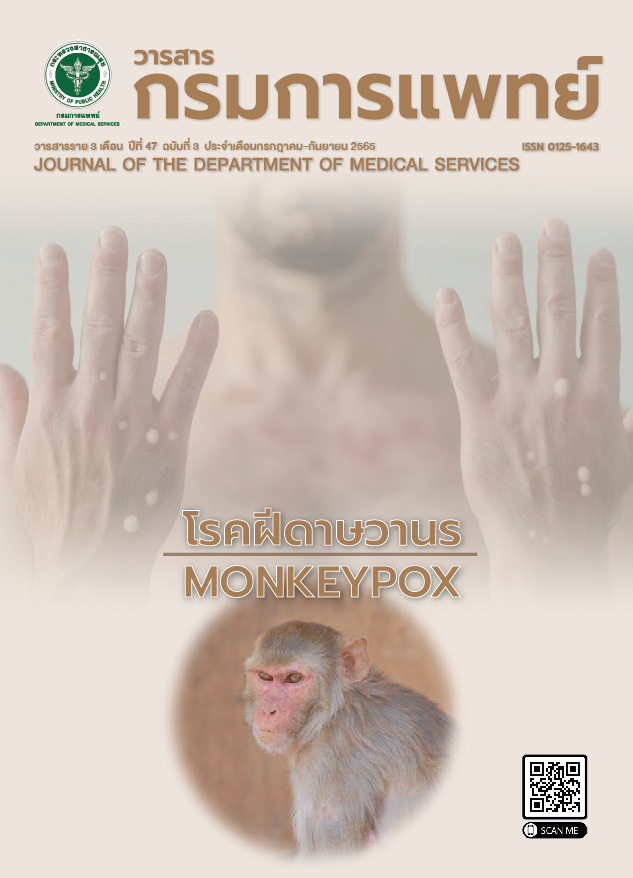Effect of Ortho-Phthaladehyde Disinfectant on Color Stability of Two Different Acrylic Resin Teeth Using Spectrophotometer
Keywords:
Chemical disinfectant, Ortho-Phthalaldehyde, Color stability, Acrylic resin teethAbstract
Background: Prosthodontics procedure usually be contaminated by saliva, blood and secretion. The American Dental Association has recommended to disinfect dentures using intermediated-level chemical disinfectants at least for preventing cross-contamination and decreasing the spread of infection. Ortho-Phthaladehyde (OPA) is a high-level disinfectant with rapid onset and easy to use. However, Studies support effectiveness of OPA in dentistry still limited. Objective: The purpose of this study was to evaluate the effect of OPA disinfectants on the color stability of acrylic denture teeth using spectrophotometric analysis. Methods: A two different brands of acrylic central incisor were Cosmo and Major dent. The specimens from each band (n=30) were randomly divided into 2 groups (n=15) and immersed in distilled water (control group) and OPA. Each acrylic tooth was immersed repeatedly and measured the color using a spectrophotometer at the end of cycle 1, 5, 10, 20, 30, and 50. Color differences (∆E*)were then evaluated using CIE Lab system. Friedman, Mann-Whitney U and Wilcoxon signed rank tests were used as a statistical analysis at 95% confidence level. Result: There were decreases in ∆L*∆a*∆b* of an acrylic tooth from both brands after immersion in OPA. Both brands of acrylic teeth showed significant differences in ∆E* values (p < 0.05) between the control and the experimental group after cycle 1, 20, 30 and 50 of an immersion. In addition, the ∆E* values increased along with the number of immersion cycles and became highest when the tooth was immersed for 50 cycles. While comparison between Cosmo and Major dent displayed a significant difference in ∆E* values after immersion for 10 cycles. Conclusion: OPA disinfectant can significantly alter color stability of acrylic resin teeth. The number of repetitive immersion cycles and the type of acrylic denture teeth can affect the change in color stability with a significant difference.
References
Shi B, Wu T, McLean J, Edlund A, Young Y, He X, et al. The denture associated oral microbiome in health and stomatitis. mSpher 2016;1:e00215-16.
Olms C, Yahiaoui-Doktor M, Remmerbach TW, Stingu CS. Bacterial Colonization and Tissue Compatibility of Denture Base Resins. Dent J (Basel) 2018;6:20.
Chen L, Zhao J, Peng J, Li X, Deng X, Geng Z, et al. Detection of SARS-CoV-2 in saliva and characterization of oral symptoms in COVID-19 patients. Cell Prolif 2020;53:e12923.
Wood PR. Cross infection control in dentistry a practical illutratrated guide. 2nd ed. London: Wolfe Publishing Ltd; 1992.
Piskin B, Sipahi C, Akin H. Effect of different chemical disinfectants on color stability of acrylic denture teeth. J prosthodont 2014;23:476-83.
Cooke RP, Goddard SV, Whymant-Morris A, Sherwood J, Chatterly R. An evaluation of Cidex OPA (0.55% ortho-phthalaldehyde) as an alternative to 2% glutaraldehyde for high-level disinfection of endoscopes. J Hosp Infect 2003;54:226-31.
Seo HI, Lee DS, Yoon EM, Kwon MJ, Park H, Jung YS, et al. Comparison of the efficacy of disinfectants in automated endoscope reprocessors for colonoscopes: tertiary amine compound (Sencron2®) versus ortho-phthalaldehyde (Cidex®OPA). Intest Res 2016;14:178-82.
Silva PM, Acosta EJ, Jacobina M, Pinto Lde R, Porto VC. Effect of repeated immersion solution cycles on the color stability of denture tooth acrylic resins. J Appl Oral Sci 2011;19:623-7.
Robinson JG, McCabe JF, Storer R. Denture bases: the effects of various treatments on clarity, strength and structure. J Dent 1987;15:159-65.
Goiato MC, Nóbrega AS, dos Santos DM, Andreotti AM, Moreno A. Effect of different solutions on color stability of acrylic resin-based dentures. Braz Oral Res 2014; 28:S1806-83242013005000033.
Douglas RD, Steinhauer TJ, Wee AG. Intraoral determination of the tolerance of dentists for perceptibility and acceptability of shade mismatch. J Prosthet Dent 2007;97:200-8.
Alghazali N, Burnside G, Moallem M, Smith P, Preston A, Jarad FD. Assessment of perceptibility and acceptability of color difference of denture teeth. J Dent 2012;40 Suppl 1:e10-7.
Kuehni RG, Marcus RT. An Experiment in Visual Scaling of Small Color Differences*. Color Research & Application 1979;4:83-91.
Streckenbach SC, Alston TA. Perioral stains after ortho -phthalaldehyde disinfection of echo probes. Anesthesiology 2003;99:1032.
Miner N, Harris V, Lukomski N, Ebron T. Rinsability of orthophthalaldehyde from endoscopes. Diagn Ther Endosc 2012;2012:853781.
Horikiri M, Park S, Matsui T, Suzuki K, Matsuoka T. Ortho-phthalaldehyde-induced skin mucous membrane damage from inadequate washing. BMJ Case Rep 2011;2011:bcr0220102709.
Wardle E JD. Determination of rinsing volumes following manual endoscope disinfection with ortho-phthalaldehyde (OPA). J Gastroenterol Nurses College Australia 2003:7-9.
Downloads
Published
How to Cite
Issue
Section
License
Copyright (c) 2022 Department of Medical Services, Ministry of Public Health

This work is licensed under a Creative Commons Attribution-NonCommercial-NoDerivatives 4.0 International License.
บทความที่ได้รับการตีพิมพ์เป็นลิขสิทธิ์ของกรมการแพทย์ กระทรวงสาธารณสุข
ข้อความและข้อคิดเห็นต่างๆ เป็นของผู้เขียนบทความ ไม่ใช่ความเห็นของกองบรรณาธิการหรือของวารสารกรมการแพทย์



